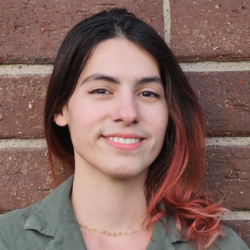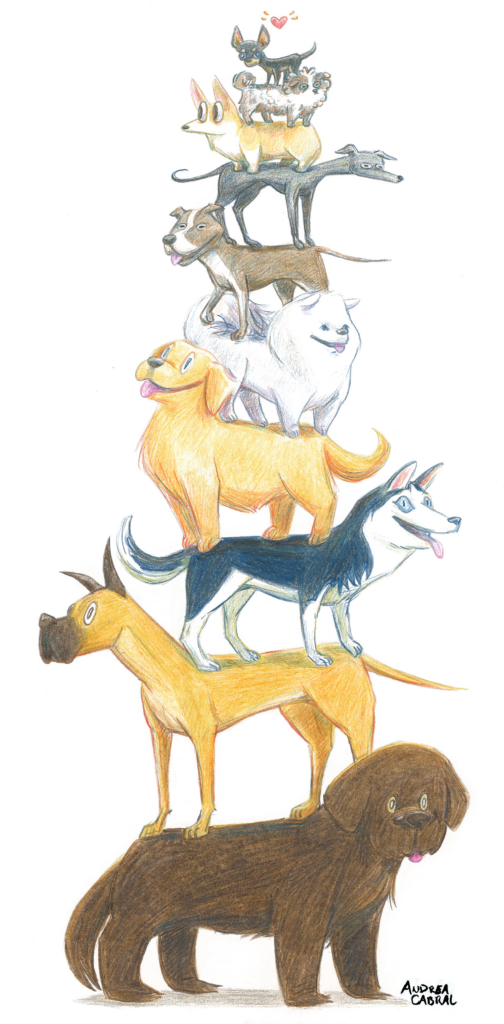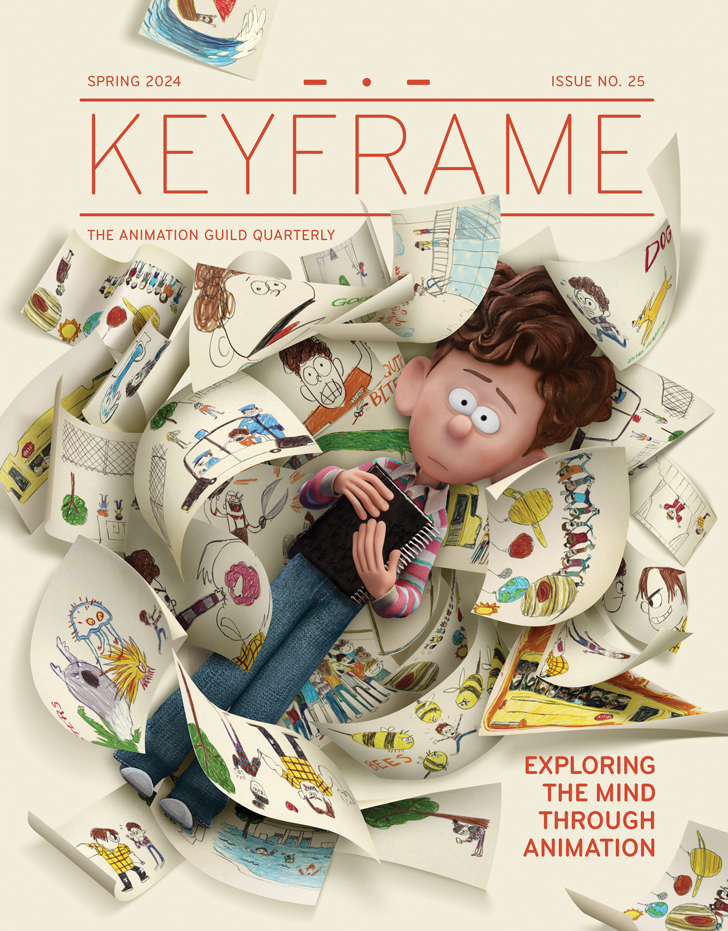
Tell us a little about yourself and your career.
I’m a Storyboard Artist and 2D Animator originally from Somerset, Massachusetts. In 2016 I graduated from the Massachusetts College of Art and Design in Boston with a BFA in animation. After working at a small animation studio in Boston for a year post-grad, I decided to move to the Los Angeles area in the fall of 2017 to pursue more career opportunities. My first job in L.A. was working as an in-house 2D Animator at Warner Bros. Animation on the series Yabba Dabba Dinosaurs.
Since then, I’ve made the transition from Animator to Storyboard artist. I’ve done storyboards for Cartoon Network on Jessica’s Big Little World and Apple & Onion, and also at Nickelodeon on SpongeBob SquarePants and Kamp Koral. I’m currently working for Nickelodeon again on a new project. In my free time, I’ve been making my own short 2D animations during livestreams on my Twitch channel. When not making art, I enjoy riding my bike, baking, hiking, and playing video games.

What challenges have you faced in navigating a career in animation?
Being on projects that were cancelled or cut short mid-production has been the biggest challenge by far. The first time this had happened to me was while on my first job on Yabba Dabba Dinosaurs when the episode order was suddenly cut. The second time was while I was at Cartoon Network working on a TV movie for HBO Max called Driftwood, and the project was scrapped entirely as we were halfway through boarding it. Shortly after that, I was also working on Jessica’s Big Little World when that show’s episode order was cut mid-season as well. It’s devastating when this happens.

It’s already nerve-wracking being unemployed so suddenly, but on top of that, you have to accept that you and your coworkers spent months, sometimes years, on something that will never get to be completed or seen. The preproduction work that you did can never be shown publicly. It feels like your career takes a step backward, and there’s nothing you can do about it. I’ve felt absolutely crushed by this, but I’ve always done my best to think positively. I remember that even when my career takes a major blow like that, it doesn’t take away my ability to make art. I remember that I’ve always been able to make things that I’m proud of whether or not I’m working on a studio production, and I’ll continue to make things that I’m proud of despite these setbacks.
Who are your inspirations in the field of animation?
Within animation, I grew up with a lot of cartoons that inspired my work quite a bit as I got older. I especially liked that era of cartoons on Cartoon Network from around the mid-to-late 2000’s like Chowder, Foster’s Home for Imaginary Friends, The Marvelous Misadventures of Flapjack, and Adventure Time. Those shows were all so weird and whimsical, and also incredibly charming. I think that’s something I always try to put into my personal work, a nice mix of weirdness and appeal. I’m also inspired by a lot of comic artists, such as Meredith Gran and Lisa Hanawalt. There are so many incredibly talented people telling beautiful stories through comics and graphic novels, and several of those have been a great influence on my work and the stories I like to tell.

What do you hope to accomplish as an artist in the animation industry?
I think what I want the most is more opportunities to put my own ideas into the work I make for my job. It’s something I love a lot about working in storyboards. Early on in my career, it felt very much like I was drawing other people’s ideas, which was fine for me at the time, but it didn’t offer a lot of chances to put myself into what I was making. Since then, I’ve gotten to work on several different productions, and I’ve gotten many opportunities to add my own ideas to the final product, whether it’s a fun visual gag or a line of dialogue I came up with. I’ve always been known as someone who can draw, but I also want to be known as someone who can provide creative input and be part of that collaborative process that makes the final work better. Getting to do both as a board artist is ideal to me, and the jobs I’ve done that allow for this have always been the most fun and rewarding. If I can keep getting more opportunities to do that in the future, I’ll be very satisfied with my career.

What does being in the Union mean to you?
Going from working at a non-union studio on the east coast to a union job in the L.A. area was life-changing for me back when I was still early in my career. I suddenly made significantly more money, and I had reliable health insurance and benefits for the first time in my life. It felt strange at first. Like most of us, I was told that having a career in the arts would mean that I’d always be struggling to make ends meet. It has never been lost on me that the only reason I’m able to live comfortably in my profession is thanks to the gains fought for by my Union, historically as well as in the present day.
To me, being in the Union means that I have a responsibility to fight with my fellow members to keep our careers sustainable, because I greatly benefit from the people who fought for it before me. I’m proud to be part of The Animation Guild alongside all the other amazing artists I’ve met over the years. It’s incredibly important at this time that we use our collective efforts and do all we can to keep our careers sustainable for ourselves, and for our future union kin.
Learn more about Andrea on her website.
Follow her on Instagram, X (formerly Twitter), and Twitch.







.png)